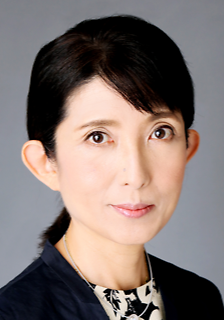[Seminar] "Modeling of retinal degeneration and its application to develop therapeutic strategy" by Prof. Sumiko Watanabe

Date
Location
Description
Abstract:
We are focusing on retinal photoreceptor degenerative disease to understand pathogenic mechanisms and develop therapeutic strategy. More than 250 genes had been identified as causal genes by their mutations for inherited retinal degenerative diseases (IRD). Identification of early phenotype of IRD is crucial to design and develop treatment. However, knowledge had slowly been accumulated partly because lack of appropriate human models to do basic study. Therefore, in addition to the mouse model, we introduced disease specific human iPS cells (iPSC). We established iPSC from IRD patients, and in vitro differentiation protocols to retina and RPE were employed.
As a first part, I would like to introduce about our efforts to establish gene therapy protocol. Currently, as therapeutic strategies for IRD, the gene therapy is one of promising way, but number of genes mutated in IRD encode large size, which is not applicable for virus based gene transfer. In addition, dominant-negative effects of mutated genes of autosomal dominant IRD is supposed, suggesting that alternative way for gene replacement should be employed for these cases. We adapted exon skipping strategy, and like to introduce our current focus to establish a model by using CRISPR/Cas9 and human iPSC.
As a second part, I like to introduce Nmnat1, one of causal genes of LCA, which is characterized as early onset of photoreceptor degeneration. We suppressed the expression of Nmnat1 in mouse retinal explant culture and found that Nmnat1 is important to keep NAD level in developing retina. Upon loss-of-function of Nmnat1, Sirts did not work appropriately lead to enhanced expression levels of certain pro-apoptotic genes and stabilization of p53, and the phenotype is reversed by the addition of NAD, suggesting the potential use of NAD for therapeutic strategy. The observation is currently verified using human iPSC derived retinal organoids.
By my talk, I like to convey that both hiPSC and mouse models have pro- and con- features, and importance to take advantages of both to achieve our final goal.
Biography:
2016-presentAdjunct Professor, Soonchunhayang Institute of Medi-Bioscience (SIMS), Soonchunhayang University, Korea
2005-presentProfessor, Division of Molecular and Developmental Biology, The Institute of Medical Science, Graduate School of Medicine and Faculty of Medicine, The University of Tokyo
2001-2005Associate Professor, Division of Molecular and Developmental Biology, The Institute of Medical Science, The University of Tokyo
1995-2001Assistant Professor, Division of Molecular and Developmental Biology, The Institute of Medical Science, The University of Tokyo
1995Ph.D in Medicine, The University of Tokyo
1991-1995Research Associate, Division of Molecular and Developmental Biology, The Institute of Medical Science, The University of Tokyo
1991 and 1993Visiting Scientist, DNAX Research Institute of Molecular and Cell Biology, USA
1990-1991University of Tokyo, Graduate school of Medicine (Ph.D)
1988-1990University of Tokyo, Graduate school of Medicine (Master)
Intra-Group Category
Subscribe to the OIST Calendar: Right-click to download, then open in your calendar application.



